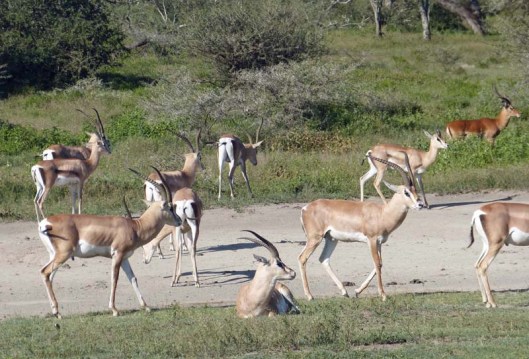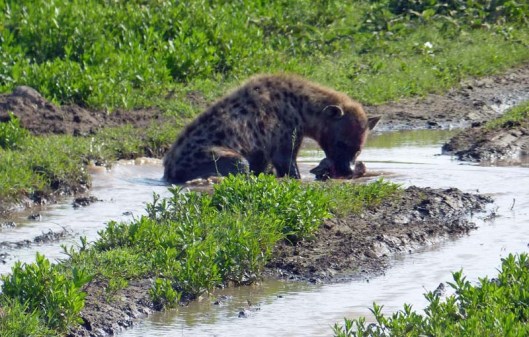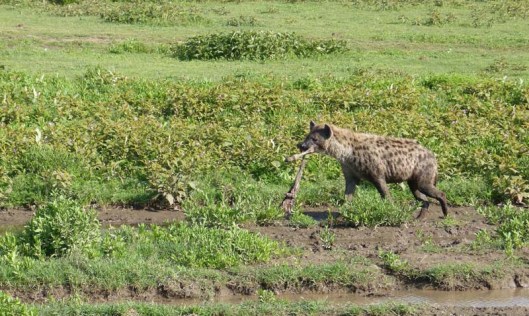Tags
Cokes hartebeest, giraffe, Grantj's gazelle, hornbill, Hyena, Impala, lion cub, marabou stork, Ndutu, Shifting Sands, Tanzania, Thomson's gazelle, Von der Decken's hornbill, White stork, Wildebeest, zebra
The afternoon’s safari

Marabou storks


Thomson’s gazelle (with horizontal black stripe), Grant’s gazelle (without) and Impala (Tawny colour)
included observing how difficult it is for giraffes to drink,

How do giraffes drink? Inelegantly


Von der Decken’s hornbill
a herd of wildebeest and zebras migrating firstly alongside us and then crossing our path, many of the zebras stopping to drink, though not the wildebeest,





Cokes hartebeest
and an enchanting time again, as night fell, with some lions. It took some while for us to realise just how many there were in the heap and in the bushes, but in the end we counted seven cubs and three lionesses. A delightful moment was when one of the latter just went and lay down on top of the heap of cubs.




The next day, Monday 15th February, meant it was time to leave Ndutu and move on, or rather to retrace our path. This involved a much sunnier drive across the plain than when we arrived, and some great wildlife moments: a spotted hyena washing its meat, dozens of white storks at a watering hole and wheeling in the sky (sorry, no decent picture of that), and baby Thomson’s gazelle and wildebeest.






White storks coming in to land





We also stopped at ‘Shifting Sands’, an isolated sand dune that moves under the effect of the wind, a most curious phenomenon. Shortly afterwards we were out of the Park.




(Soon: Ngorogoro Crater)

Wonderful photos as always – but I still find it hard to like a hyena. Pussycats steal the show for me!
LikeLike
No contest for me but the hyena was curiously fascinating.
LikeLike
What a wonderful post to look through, I loved the giraffe drinking! Thank you for sharing such a feast.
LikeLiked by 1 person
It was good to see for real what we’d only seen on the telly before.
LikeLike
What good value you got from your visit.
LikeLiked by 1 person
I think I’ll not calculate a cost per animal! If I fixed by all those wildebeest it would come out very low!
LikeLiked by 1 person
Lovely pictures – I hadn’t realised that giraffes need a strong pair of knees in order to drink. So glad you had another chance to see lionesses and all those cubs.
LikeLike
It’s almost unbearable to watch those giraffe …
LikeLike
I’ve always wanted to see a giraffe at liberty. How wonderful to see them folding themselves up to drink, and then unfolding and striding along next to the trees.
LikeLike
Seeing a giraffe for real is… surreal! And drinking, well the left-hand one looks like a bendy toy, doesn’t it.
LikeLiked by 1 person